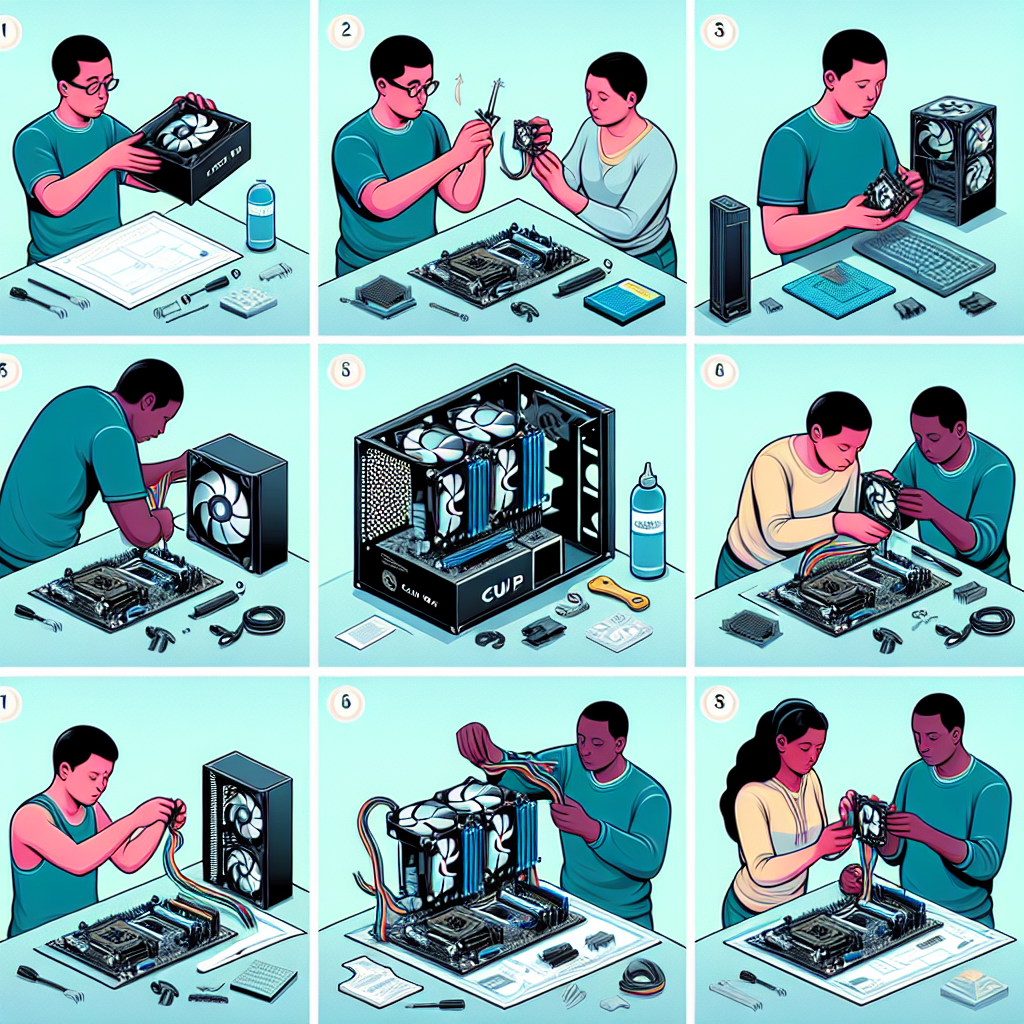Installing a liquid CPU cooler can revolutionize your PC’s cooling capabilities, allowing for quieter operation and better temperature management. Whether you’re a seasoned computer enthusiast or a DIY novice, following the right steps ensures a smooth installation process. In this guide, we’ll cover all the essential steps for installing a liquid CPU cooler effectively.
Understanding Liquid CPU Coolers
Before diving into the installation, it’s vital to understand the basics of liquid CPU coolers. These cooling systems use a pump to circulate a liquid coolant, which absorbs heat from the CPU and transfers it to a radiator. Fans then dissipate the heat from the radiator, keeping your CPU at optimal temperatures.
Common Components in Liquid CPU Coolers
- Water Block: The part that attaches to the CPU and transfers heat into the coolant.
- Pump: Circulates the coolant through the system.
- Radiator: Transfers heat from the coolant to the air, usually equipped with one or more fans.
- Tubing: Carries the coolant between components.
Preparation Steps
Required Tools and Materials
- Screwdriver set
- Thermal paste
- Microfiber cloth
- Isopropyl alcohol
Preparing Your Workspace
Before beginning the installation, ensure you have a clean, well-lit workspace. Lay out all components and tools to streamline the process.
Removing the Existing Cooler
If you have an existing CPU cooler, you’ll need to remove it first. Power off your computer, unplug it, and discharge any static electricity by touching a grounded metal object. Disconnect any fan or pump headers from the motherboard and remove the mounting hardware holding the cooler to the CPU. Clean any residual thermal paste from the CPU using isopropyl alcohol and a microfiber cloth.
Step-by-Step Installation Guide
1. Mounting the Radiator
Select an appropriate location for the radiator within your case. Common mounting locations include the top, front, or rear of the case. Use the provided screws to secure the radiator in place.
2. Installing the Fans
Attach the fans to the radiator, ensuring the air flows in the desired direction. Typically, this involves aligning the fan arrows (indicating airflow direction) with your ventilation goals.
3. Attaching the Water Block
Apply a small amount of thermal paste to the center of your CPU. Place the water block on the CPU and secure it using the mounting brackets provided with your cooler.
4. Connecting the Pump and Fans
Plug the pump’s power cable into the CPU fan header on the motherboard. Connect the fan cables to appropriate headers or a fan controller to manage their speed.
5. Managing the Tubing
Carefully route the tubing to prevent any kinks or sharp bends, ensuring the coolant flows freely between the water block and radiator.
6. Powering Up and Testing
Double-check all connections and ensure everything is securely in place. Reconnect your power supply, power up your computer, and enter the BIOS to monitor the CPU temperature. Look for leaks or unusual noises from the cooling system. If everything appears normal, proceed to boot into your operating system and use software tools to monitor temperatures under load.
Post-Installation Tips
- Monitor Temperatures: Use software tools like HWMonitor or Core Temp to keep an eye on your CPU temperatures.
- Regular Maintenance: Periodically check for dust buildup on the radiator and clean it to maintain optimal performance.
- Check for Leaks: Look for any signs of leakage around the fittings and connections.
Conclusion
Installing a liquid CPU cooler can seem daunting, but with the right preparation and attention to detail, you can achieve excellent cooling performance. By following the steps outlined in this guide, you’ll ensure a successful installation that keeps your CPU running cool and quiet. Happy building!

